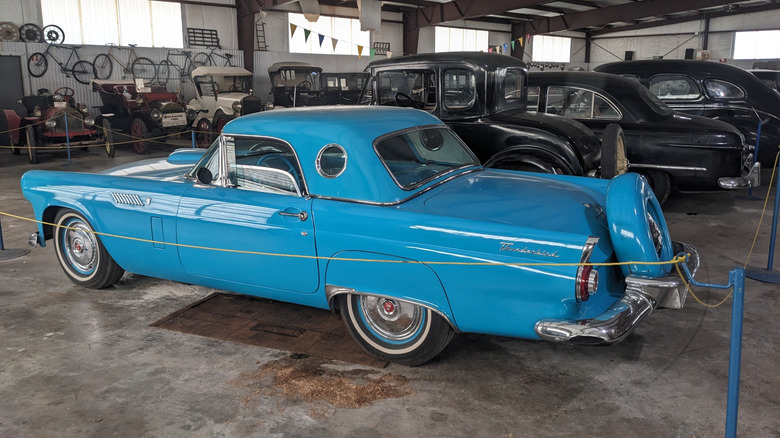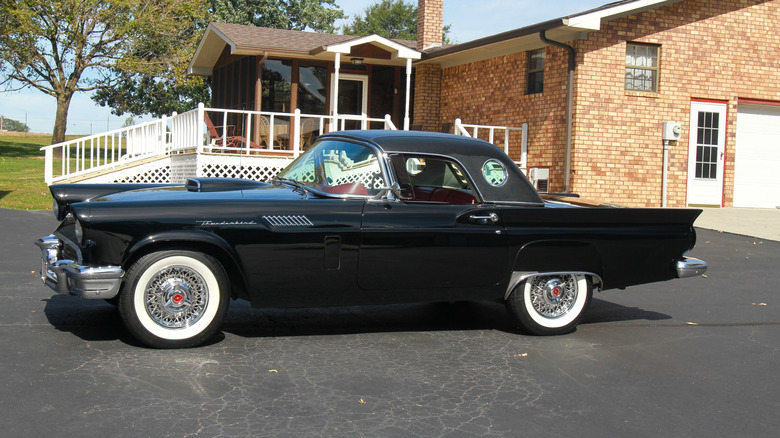What Year Did The Ford Thunderbird Have Portholes?
Diehard car enthusiasts probably know that Chevy's two-seater Corvette was first displayed to the public at the New York Auto Show in 1953. As a direct response, Ford created the Thunderbird. Unlike the 'Vette, the T-bird eschewed the whole sports car vibe, opting to focus on personal luxury as its main feature. When it dropped in 1955, the Thunderbird immediately outsold the Corvette by a staggering 24 to 1, becoming a symbol of American cruising culture thanks to those personal luxury options, clean lines, and cheaper MSRP.
It's since become an American road classic, making several iconic appearances in movies such as 1973's "American Graffiti," where Suzanne Somers drove a white '56 T-bird. If you noticed, that particular model had a small oval window cut into the back sides of the hardtop. These "portholes" were installed because the removable hardtop suffered from blind spots. The windows provided the driver with better visibility, especially in traffic.
The '55 model came with that removable fiberglass hardtop as standard, but you could get an optional folding convertible top as well. Unfortunately, the early hardtop didn't include the porthole, although some individual dealerships added them upon request. The blind spot became so problematic that Ford started including the "porthole" fix as an optional feature midway through the '56 model year. They also introduced the Continental Kit, which moved the spare tire from the trunk into a spherical metal case on the back of the car, shifting weight to the rear and helping to balance it out.
Portholes helped visibility and became an iconic feature
Ford hoped the Thunderbird would remind people of the roadsters from before WWII and thus considered it an "image car" that might sell 10,000 units a year. So, when they sold 16,155 in 1955, Ford knew they had a winner. It also ruffled some feathers at Chevrolet because it was an immediate success — unlike the Corvette, which only sold 674 units that year. Ford built 53,166 Thunderbirds between '55 and '57.
Aside from the porthole windows, the '56 was the first T-bird to have what Ford called "Lifeguard Design," a new set of features to help protect against injuries caused in an accident. This included special padding (allegedly five times more shock absorbing than standard foam padding) for the instrument panel and sun visors, improved door latches, a deep-center steering wheel, and seat belts (a $9 option).
Both the '56 and '57 followed the formula Ford laid down in '55 by providing a two-seater with a ragtop and an available hardtop. The 1957 model saw the Thunderbird gain 1,000 pounds by adding 18 inches to the wheelbase for an optional second row of seats. It once again included the porthole as a functional improvement option on the fiberglass hardtop. Ford only officially offered the porthole in the '56 and '57 models. However, the fact that some independent dealers offered them on request and many '55s were retrofitted later in life makes it hard to identify a Thunderbird's year based on the portholes alone. After 11 generations, Ford decided to put the Thunderbird to rest in 2005.

